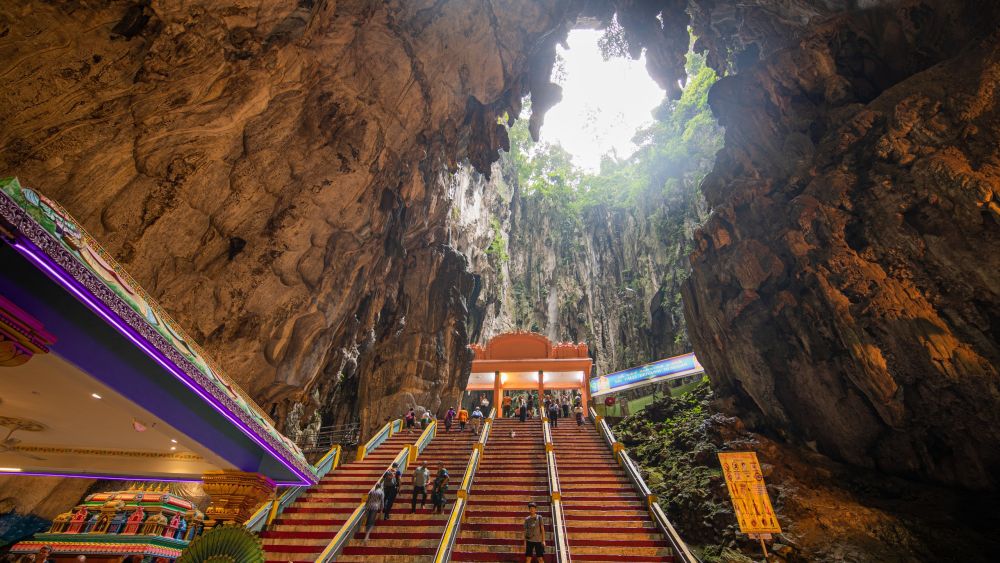

Batu Caves, one of Malaysia's most iconic tourist destinations, is located just 13 kilometers north of Kuala Lumpur. These natural limestone caves are believed to be around 400 million years old, but their role as a popular site for tourists and pilgrims alike is much more recent.
The caves were first used by the indigenous Temuan people as shelters and transit points. However, it wasn't until 1878 when American naturalist, William Hornaday, brought the caves into the limelight. The colonial government then laid railway tracks to the area, which increased accessibility and paved the way for tourism development.
The transformation of Batu Caves into a place of worship began when K. Thamboosamy Pillai, an Indian trader, was inspired by the 'vel' shaped entrance of the main cave. In 1891, he established the Temple Cave (or Cathedral Cave) and dedicated it to Lord Murugan. The installation of the Murugan statue and consecration of the temple cave became a key driver for religious tourism to the area.
The establishment of the Sri Subramanian Temple within the caves attracted Hindu pilgrims, especially during the annual Thaipusam festival, which sees thousands of devotees and visitors. The festival has become a major tourism event, drawing spectators from all over the world to witness the colorful procession and acts of devotion, such as carrying kavadis and piercing the skin as acts of penance or thanksgiving.
In recent years, the tourism infrastructure at Batu Caves has developed significantly. Visitors can now explore various attractions such as the Dark Cave, with its educational tours on cave conservation, and the Ramayana Cave, which portrays scenes from the Hindu epic. In 2006, an impressive 42.7-meter high statue of Lord Murugan, the tallest in the world, was unveiled, increasing the site's prominence as a tourist destination.
In the spirit of ecotourism and sustainability, Batu Caves is making efforts to protect the local environment and its inhabitants, including the macaque monkeys that are a common sight. Efforts to enhance visitor experience through the improvement of facilities while ensuring the conservation of the site's natural and cultural heritage are ongoing.
Nowadays, Batu Caves is not just a pilgrimage site but a bustling attraction with rock climbing routes, an Art Gallery Cave, and a Museum Cave that presents Hindu paintings and sculptures. It remains one of Malaysia's must-visit destinations for those looking to experience the country's rich cultural tapestry and natural beauty.
The allure of Batu Caves as both a religious site and a tourist hotspot continues to grow. With its historical significance, cultural richness, and natural splendor, Batu Caves offers a unique experience that beautifully reflects Malaysia's multicultural identity.